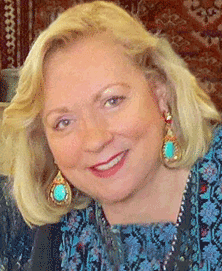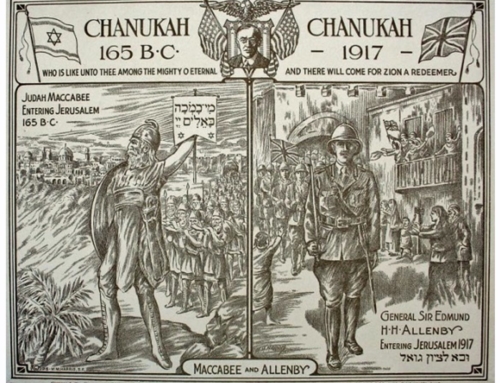Tonight marks the beginning of Succot, the Feast of Tabernacles 2014/5775, and here in Jerusalem’s Old City, I am full of awe that God has brought us to the kingdom for such a prophetic time as this!
It usually doesn’t rain until after Succot, but tonight, Erev Succot, the evening of the first day of Succot, it rained in Jerualem. This is always a sign of blessing.
A member of our “Moveable Feast of Tabernacles” tour was at the Western Wall tonight praying for the “latter rains,” and she received from Heaven a physical evidence of her faith!
There is turmoil in much of the world. Anti-semitism seems to be as menacing as it was in the days of Hitler. Christians are being persecuted savagely in many areas of the world. Yet momentarily I am grateful to be standing in the peaceful eye of the storm swirling around the Mideast.
It seems the Lord will give us a respite here in Jerualem, and some more precious time to enjoy the ministry of reconciliation between Christains and Jews, before the next war breaks out, perhaps in the north.
And even the skies are also preaching a message tonight! Not here in Israel, but elsewhere in many places of the world, will be seen the second Blood Moon of a highly unusual tetrad that began at Passover earlier this year and that will continue with two more eerie rusty red eclipses in 2015.
God is surely speaking to the nations and trying to catch the attention of the world with his billboard in the sky in these momentous prophetic days prior to the Second Coming of Jesus/Yeshua.
And we must be like the children of Issachar in the Bible who understood the times and seasons and what Israel should do.
Tonight is a “shabbat,” a sabbath of no work, because it is the first holy evening of the week-long celebration of joy.
When I think of the war with Gaza that took place this summer, I rejoice that a major disaster was averted.
Israel’s Operation Protective Edge revealed that the Hamas terrorists had planned a mega attack at the start of these High Holy Days. But that evil plan was exposed and averted by 50 days of warfare to combat the incessant Hamas rockets and to demolish more than 30 cross border terror tunnels. The tunnels were planned as conduits for cross-border attacks on innocent Israelis by up to potentially 2,000 infiltrators from Gaza.
The Feast of Tabernacles, when Jewish families live for one week family camping style outdoors in booths, teaches us many things about the fagility of life. To live outdoors one week out of 52 is a picture of a nation’s absolute dependence upon the Almighty.
Although for 50 days many Israelis in the south nearest to Gaza were forced to live in their bomb shelters, there can be no such thing as a bomb shelter in a flimsy tabernacle! The succa teaches us to dwell in Psalm 91, in the presence of the Almighty and in the shadow of his protective wings.
The succas (boothes/tabernacles) are constructed with cloth sides or flimsy tree limbs with a rooftop of wooden sticks or palm branches. The roof must be constructed in such a way that the stars may be seen. These “succas” are decorated merrily almost like Christmas trees, with shiny tinsels and fresh fruits dangling from the palm branches, including beautiful bright red pomegranates, as reminders of God’s ample provisions.
The holiday commemorates the past, present and future.
The holiday looks back at the Exodus when the Israelites lived in the wilderness in tents on the way to the Promised Land.
The present puts emphasis upon staying under the protection of the Almighty and families rejoicing together in spiritual communion with the famous patriarchs of the Bible. There are no televisions and computer stations in succas.
But also Succot is futuristic–this appointed season looks forward to the future when King Messiah will tabernacle and rule in the City of the Great King (Zechariah 14: 16). That chapter tells us in verse 17 that every nation that will not keep the Feast of Tabernacles during the millennial rule of Messiah will be cursed with drought!
The Booths of the “Feast of Tabernacles” (Succot) are temporary dwellings—because, as an old spiritual goes, “this world is not my home, I’m just a-passin’ thru”—that “if our earthly house, this tent-this sukkah-is destroyed, we have a building from God, a house not made with hands, eternal in the heavenlies!”
The Feast of Tabernacles is also the real season to celebrate the coming into the world of the Holy One, Yeshua, in Beit Lehem (“House of Bread”—Bethlehem). As the Gospel of John attests, He took on human flesh to “tabernacle” among us! Scholars have worked out that Jesus was conceived around the time of Hannukah and December 25 but that he was actually born during Tabernacles.
Leviticus 23:39-43 describes the commandments of this appointed season:
“Now on the first day you shall take for yourselves the foliage of beautiful trees, palm branches and boughs of leafy trees and willows of the brook, and you shall rejoice before the YHVH your God for seven days. You shall thus celebrate it as a feast to the YHVH for seven days in the year. It shall be a perpetual statute throughout your generations; you shall celebrate it in the seventh month. You shall live in booths (Hebrew: sukkot) for seven days; all the native-born in Israel shall live in booths, so that your generations may know that I had the sons of Israel lived in booths when I brought them out from the land of Egypt. I am YHVH your God.”
The Lulav (לולב) in the photo is a closed frond of the date palm tree. It is one of the arba’ah minim (ארבעה מינים, four species) used in the morning prayer services during the holiday of Sukkot, the Festival of Booths, also to commemorate when the Israelites camped out in the wilderness after leaving Egypt.
The other species are the Hadass (myrtle), Aravah (willow), and Etrog (citron).
“On the first day you are to take choice fruit from the trees, and palm fronds, leafy branches and poplars, and rejoice before the LORD your God for seven days.” Leviticus 23:40
The lulav is bound together to perform the commandment (mitzvah) of waving the lulav. Three species are held in one hand while the etrog is held in the other. The user brings his hands together and waves the species in all four directions, plus up and down, to attest to God’s mastery over all of creation. Isn’t that a beautiful affirmation? This ritual also symbolically voices a prayer for adequate rainfall over all the earth’s vegetation in the coming year. Thus the Jewish people pray for the world while the world cares so little, sadly, for the Jewish people. That will change when Messiah Yeshua returns to reign and rule from the throne of his ancestral father David. In those days to come, Israel will be the chief of nations–the head and not the tail– and all peoples will do homage to Yeshua in the City of the Great King.
I was brought up in an evangelical Christian home where the Jewish people were honoured as our patriarchs, but we never learned about the Feast of Tabernacles, although it is clearly spelled out in the Bible. The closest thing to a fall festival in my native America was Thanksgiving Day.
Christians for nearly 2,000 years have camped out spiritually at Passover and Shavuot (Pentecost) but now, in the fullness of time, we are learning to appreciate all of the Levitical appointed seasons of Yehovah and their prophetic significance.
The Feast of Tabernacles in many ways is a picture of the world to come. Hallelu-Yah!
If you are edified and blessed by our television shows, our social media pages, and this newsy website, please prayerfully consider partnering with The Jerusalem Channel by donating at this link.








Leave A Comment